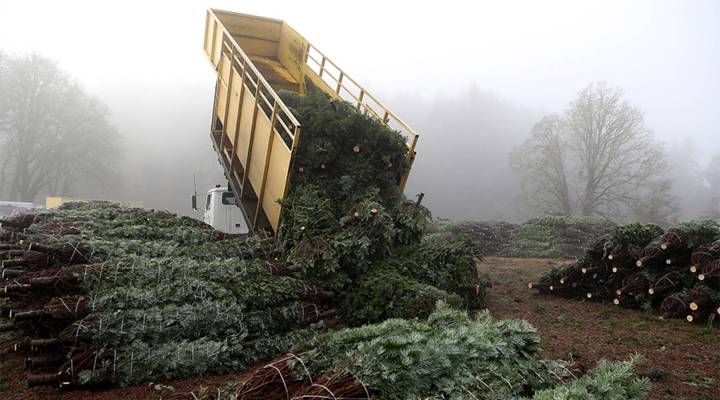
Amazon tried out a new product this holiday season: real Christmas trees
Amazon tried out a new product this holiday season: real Christmas trees

Time is pretty much up for you to do your last-minute Christmas shopping if you’re buying through Amazon. You could still go to a store, but who does that anymore? It is not a stretch to say that Amazon is trying to take over all things holiday. It tends to offer something new this time of year. In 2018, it’s fresh Christmas trees, delivered to your doorstep. How does that even work? Specialized growers have controlled the secrets of the Christmas tree industry for generations. How did Amazon hope to compete? And why? Joshua McNichols is a reporter at public radio station KUOW in Seattle and co-host of the podcast, “Prime(d).” He tells Marketplace’s Jed Kim how Christmas trees fit into Amazon’s big-picture strategy. The following is an edited transcript of their conversation.
Joshua McNichols: Amazon is always looking for ways to bring more customers to its site because it’s constantly trying to accelerate, and for Amazon, that means constantly adding new reasons for people to visit their site. That attracts more third-party sellers, which in turn brings more people to the site. So adding Christmas trees is a way to, like, keep Amazon’s momentum moving forward.
Jed Kim: How did these growers feel about Amazon horning in on their turf?
McNichols: Well, I think in the long run, they are the controllers of the situation. They’ve got the thing that everybody wants. There’s not nearly enough Christmas trees to supply demand. Drought has cut back the supply. It’s even hard to get seedlings of the really drought-tolerant trees. So they’re in control of this situation, and they don’t see Amazon as this huge threat. In fact, they see it as a possible ally to help them with this long-term threat that they’re facing, which is a lot of people are switching to plastic Christmas trees. And if Amazon can help customers — when somebody goes to Amazon and types in “Christmas tree,” they would love it if Amazon gives them a fresh Christmas tree at the top of the list. And if they can facilitate a customer choosing to buy a real tree instead of an artificial tree, then they’re happy to have Amazon helping them out.
Kim: We’re a few days away from Christmas. How did it all work out for Amazon?
McNichols: Well, they ran out of trees, so it didn’t work out that well. And then there’s this problem of price, too, right? Because it costs a lot to ship a tree. They were charging for these 7-foot, fresh Christmas trees over $100. In the Pacific Northwest, where I live, around Seattle, that’s a lot of money for a Christmas tree. We’re accustomed to paying much less for probably a much nicer-looking tree. But in states like California and Texas, which are big Christmas tree markets, there’s a lot of people there, Amazon’s prices, over $100 for a tree, are a lot more competitive down there. So in the long run, this could work out for them. Plus there are a lot of people who don’t necessarily want that traditional experience of going out to a tree lot. Finding one on your apartment doorstep after you get home from work might be what a lot of people want.
There’s a lot happening in the world. Through it all, Marketplace is here for you.
You rely on Marketplace to break down the world’s events and tell you how it affects you in a fact-based, approachable way. We rely on your financial support to keep making that possible.
Your donation today powers the independent journalism that you rely on. For just $5/month, you can help sustain Marketplace so we can keep reporting on the things that matter to you.












